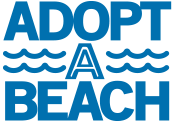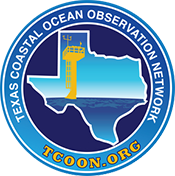Programs
Adopt-A-Beach
The Texas General Land Office has been sending this message across the state for thirty-one years, and Texans have responded. Since the program began back in 1986, there have been more than 523,000 volunteers remove more than 9,590 tons of trash from Texas beaches.
Due to tide patterns in the Gulf of Mexico, trash dumped anywhere in the gulf is likely to end up on a Texas beach. Volunteers record information such as the source and type of debris collected on data cards. This data has been instrumental in the passage of international treaties and laws aimed at reducing the amount of offshore dumping.
Keeping Texas beaches clean and safe is an economic as well as environmental priority. Coastal tourism, a $7 billion industry, and commercial fishing, a $1.9 billion business, demand clean beaches and a healthy gulf to thrive.
TCOON
TCOON is managed through cooperative agreements between the Texas General Land Office, the Texas Water Development Board, the U.S. Army Corps of Engineers and the National Oceanic and Atmospheric Administration. The network is operated and maintained by National Oceanic and Atmospheric Administration's National Ocean Service.
TEXAS BEACHWATCH
The Texas Beach Watch Program collects water samples from approximately 167 stations along the Texas coast in Aransas, Brazoria, Cameron, Galveston, Jefferson, Kleberg, Matagorda, Nueces, and San Patricio counties. Samples are collected weekly during the peak beach season from May through September and every other week from October through April. In March, weekly samples are collected for Beach Watch stations on all gulf beaches to coincide with spring break.
Sediment Management Plan Development
- 2021 Sediment Management Workshop - Agenda
Workshop agenda from “Sediment Workshop 2”, a virtual workshop that was held by the GLO on November 10, 2021 - 2021 Sediment Management Workshop - Presentations Recording
Recorded presentations from the 2021 workshop. See the presentation list in the agenda above (Presentations by Syed Khalil/Beth Forrest and Juan Moya were omitted from the recording due to copyright issues). - 2021 Sediment Management Workshop - Panel Discussions Recording
Recorded panel discussions from the 2021 workshop. See the panel discussion topics in the agenda above.
Legislative Reports
- Coastal Management Program Biennial Report 2021 – 2022
Report submitted to the Texas Legislature summarizing the effectiveness of the Coastal Management Program. - CEPRA Report to the 88th Texas Legislature
Report submitted to the Texas Legislature summarizing critical erosion areas, erosion response projects and those projects' economic and natural resource benefits. - 2020 Coastwide Erosion Response Plan
Report identifying critical coastal erosion areas and prioritizing coastal erosion response studies.
Guides
- Homeowner's Handbook to Prepare for Coastal Natural Hazards
General information for homeowners about coastal storms and how to prepare, evacuate, rebuild, or retrofit to be more resilient to these weather events. - Viviendoas para Enfrentar los Desatres Naturals Costeros en Texas
Texas Coasts
Find your perfect beach. Texas Coasts provides a location-enabled mapping function with turn-by-turn directions to each of the more than 600 destinations along the Texas coast. The application integrates with both Facebook and Twitter for users to share vacation plans with friends and family.
Oil Spill Tool Kit
https://www.glo.texas.gov/coast/oil-spill/toolkit/index.html
The 2015 Toolkit website houses all Area Contingency Plans (ACPs) within U.S. Coast Guard District 8, maps covering Texas, Louisiana, Mississippi, Alabama and Florida, Regional Response Team (RRT) guidance and documents, ICS Forms (in WORD, EXCEL, PDF, MAC and Spanish), Response Plans, NOAA Job Aids, SCAT Forms, Internet links and oceanographic and meteorological information and much, much more.
The Toolkit is a response tool brought to you through a combined effort of the Texas General Land Office, U.S. Coast Guard District 8, and NOAA, as well as contributions from many of our sister State and Federal partners.
Beach Watch
https://cgis.glo.texas.gov/Beachwatch/index.html/
The Texas Beach Watch Program collects water samples from approximately 167 stations along the Texas coast in Aransas, Brazoria, Cameron, Galveston, Jefferson, Kleberg, Matagorda, Nueces, and San Patricio counties.
Shoreline Change Atlas
https://coastal.beg.utexas.edu/shorelinechange2019/
Long-term historical shoreline change rates of the Texas coast.
Resource Management Codes
Resource Management Codes assist potential bidders by providing the best available information on natural resource concerns that may be associated with leasing state land tracts, and assist them with project planning efforts and development guidelines for activities within the tracts.
Coastal Habitat Restoration GIS
http://www.cbi.tamucc.edu/CHRGIS/
CHRGIS is an interactive, online archive, qualitative analysis, and mapping tool.CHRGIS provides for visualization of beach profile survey data and aerial imagery from the Coastal Erosion Planning & Response Act (CEPRA) Program, in support of the Beach Monitoring and Maintenance Plan (BMMP). The mapping and profile analysis tools allow for online qualitative analysis of beaches nourished through the CEPRA program, and was developed by the Conrad Blucher Institute at Texas A&M University-Corpus Christi, through collaboration with the Texas Coastal Management Program (CMP) and the CEPRA program.
Digital Coast - National Oceanic and Atmospheric Administration (NOAA) Coastal Management Program
http://coast.noaa.gov/digitalcoast/
The website provides not only coastal data, but also the tools, training, and information needed to make these data truly useful. Content comes from many sources, all of which are vetted by NOAA.
State of Texas Oil Spill Response Mapping Tool
https://gisweb.glo.texas.gov/ostoolkit/index.html
Spill Toolkit, EPA National Disaster Operational Workgroup, TABS Buoy Gulf of Mexico weather and new tools like the advanced drawing tool.
Texas Coastal Sediments Geodatabase
https://cgis.glo.texas.gov/txsed/index.html
The Texas Coastal Sediments Geodatabase (TxSed) is sediment related geospatial and geotechnical data. TxSed can be used to assist in identifying compatible sediment resources for proposed beach nourishment or habitat restoration projects, and can be used as an aid in the permitting/regulatory processes for such projects.
Land & Lease Mapping Viewer
https://gisweb.glo.texas.gov/glomapjs/index.html
The NEW Land & Lease Mapping Viewer, an interactive mapping application, provides access to vast collections of land- and energy-related data at the General Land Office. The viewer displays upland and submerged Original Texas Land Survey boundaries, Permanent School Fund land, upland and coastal leases, oil and gas well locations, and current aerial imagery.
Sea Level Rise
A series of technical tools and future scenarios from analysis to support the practical understanding of impacts to the environment and to human coastal communities that may result from SLR and related climate hazards, including storm surge, in the Gulf of Mexico region.
SSPEED Center
The SSPEED Center seeks to advance research and other scholarly activities which facilitates the creation and dissemination of knowledge, to better address severe storm impacts and evacuation strategies in the Gulf Coast area.
Texas Natural Resources Information System (TNRIS)
Our collection of maps, photos, documents and other spatial datasets were acquired from multiple sources including state, federal, and local agencies, with support and donations from private sources. They encompass a wide range of years, beginning all the way from the 1920s to the present-day.



